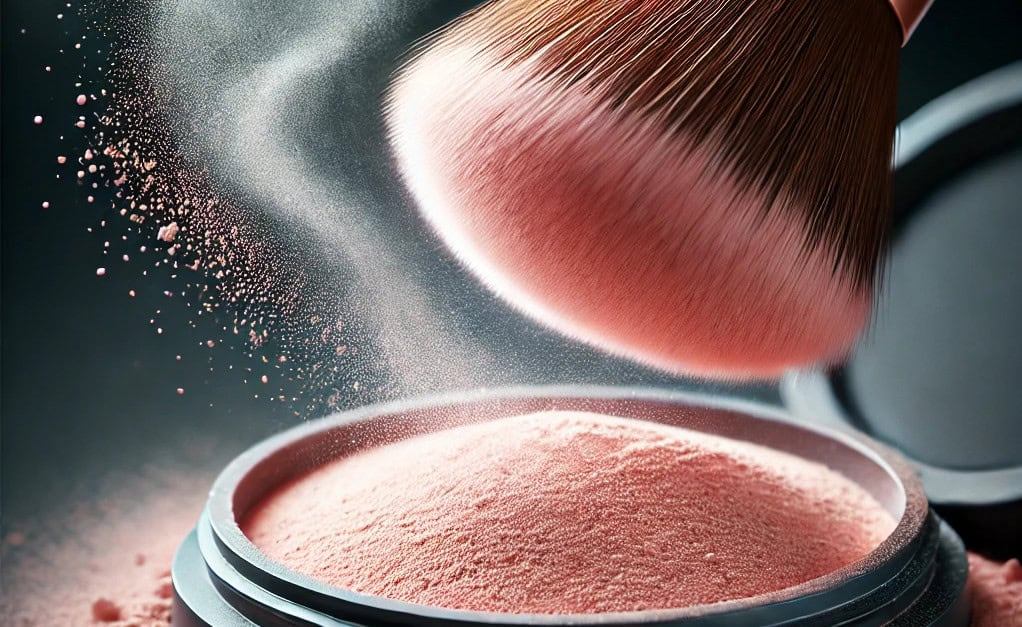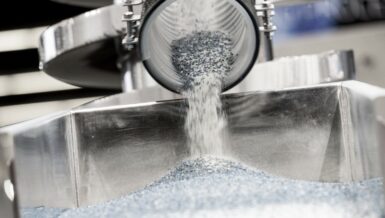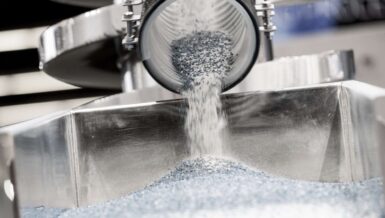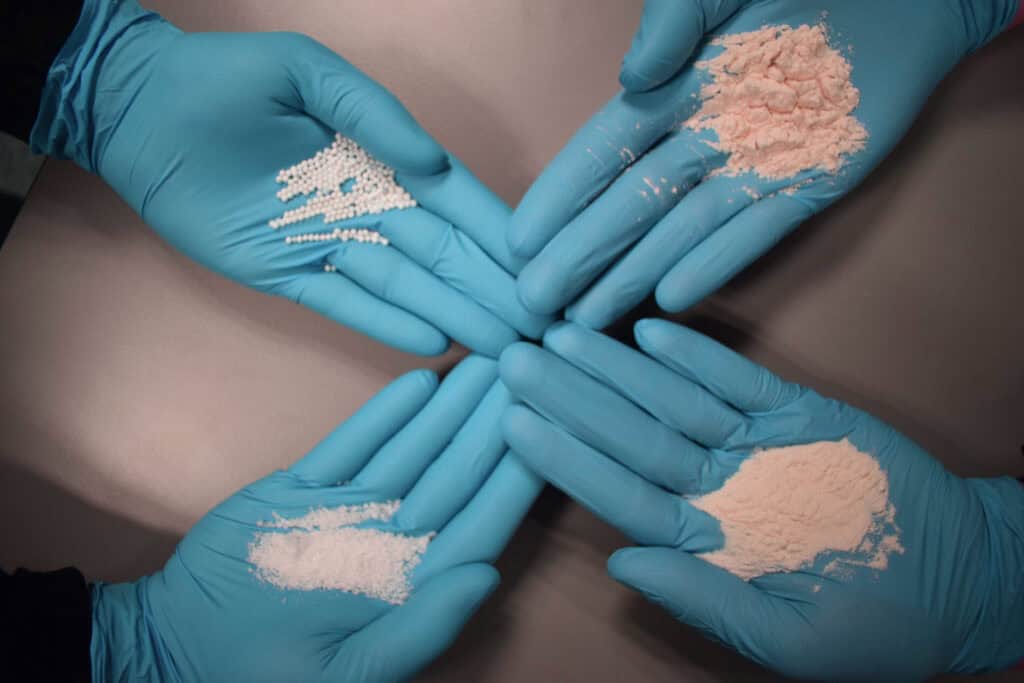Understanding Powder Flowability in Production
In cosmetics manufacturing, powder flowability refers to the ease with which powdered substances move and behave during various stages of production. This property is critical as it affects several key processes, including mixing, granulation, packaging, and storage. Poor flowability can result in production inefficiencies, such as inconsistent blending, blockages in machinery, and variations in product weight and texture. These issues compromise product quality and lead to increased downtime and higher operational costs.
Effective flowability ensures powders move smoothly through production lines, allowing for precise dosing, uniform product composition, and consistent application. Achieving this balance is vital for producing high-performance cosmetic products that meet stringent industry standards.
The Role of Flowability in Manufacturing History
The importance of powder flowability became particularly evident during the Industrial Revolution, as manufacturing processes shifted towards large-scale production. As powders were handled in more significant volumes, their physical behavior posed new challenges for engineers and manufacturers. This phenomenon soon extended to the cosmetics sector, where powders such as foundations, eyeshadows, and loose-setting powders needed to be processed efficiently without compromising quality.
Today, flowability is recognized as essential for maintaining product uniformity. Proper flow characteristics allow powders to fill molds and containers evenly, preventing defects such as clumping, uneven surfaces, or inconsistent weight. This uniformity is crucial for cosmetic products’ aesthetic appeal, performance, and consumer satisfaction.
Practical Applications in Cosmetics Production
Consider manufacturing facial powders, which require a smooth, pleasing texture for even skin application. To achieve this, the powders must flow freely during processing, avoiding clumping and particle separation. Similarly, eyeshadow production depends on uniform powder distribution to ensure consistent pigmentation and a flawless finish. Loose powders, often dispensed directly by consumers, require optimal flow properties for smooth and effortless application.
However, finer powders, often necessary for these applications, can present challenges. Smaller particles exhibit higher cohesion, making them prone to sticking and clumping. Balancing these characteristics is a core aspect of process optimization in cosmetic powder production.
Methods for Testing Powder Flowability
Manufacturers employ a range of testing methods to assess and optimize powder flowability. One common technique is the angle of repose, which measures the steepest angle at which a powder heap remains stable. This provides insight into the powder’s flow potential under free-flowing conditions. Bulk and tapped density tests evaluate how a powder’s volume changes under mechanical stress, offering data on compressibility and flow characteristics.
Shear cell testing is another valuable method. It analyzes powder behavior under mechanical stress to identify cohesion and potential flow issues in hoppers and storage bins. Advanced tools like powder flow analyzers (PFAs) generate detailed profiles of flow properties, enabling engineers to detect and address potential bottlenecks in production.
Tackling Flowability Challenges
Several common issues can hinder powder flowability in cosmetics manufacturing. Caking occurs when powders absorb moisture or are subjected to prolonged pressure, leading to lump formation. Segregation, however, happens when powder components separate due to differences in particle size or density, causing inconsistencies in the final product. Electrostatic charges can also disrupt flow by causing particles or processing equipment to adhere to one another.
Addressing these challenges involves a combination of strategies. Controlling environmental factors such as humidity and temperature can reduce moisture absorption. Particle size and shape modifications help improve flow characteristics, while adding flow aids, such as silica or tricalcium phosphate, can minimize cohesion and enhance movement within production systems. However, care must be taken to avoid over-enhancing flowability, which can lead to segregation.
Innovations in Flowability Optimization
Recent advancements have introduced the use of nano-coatings to improve powder flowability. Applying nanostructured materials, such as silica nanoparticles, to powder surfaces can reduce interparticle cohesion. This technology has already demonstrated success in pharmaceutical manufacturing and holds promise for the cosmetics industry.
By altering the surface properties of powder particles, nano-coatings enhance flow behavior without compromising other product attributes. These innovations enable manufacturers to achieve smoother processing and more consistent product performance, ultimately improving efficiency and quality control.
The Strategic Importance of Flowability
Powder flowability is critical in cosmetics manufacturing, influencing product quality, operational efficiency, and overall profitability. Consistent flowability supports uniform texture, color, and application performance, meeting the high expectations of both consumers and regulatory bodies. Efficient flow also minimizes production downtime by reducing blockages and equipment failures, optimizing productivity.
Investing in advanced testing methods and innovative solutions, such as nano-coatings, allows manufacturers to maintain reliable flow properties. These efforts enhance production efficiency and help control costs by reducing waste and rework. By prioritizing flowability at every production stage, cosmetic manufacturers can safeguard product integrity and deliver high-quality products to market.
Conclusion
Achieving optimal powder flowability is an ongoing challenge that requires a combination of material science, engineering expertise, and rigorous testing. Techniques such as angle of repose analysis, shear cell testing, and bulk density measurements provide critical data to guide process improvements. Innovations like nano-coatings offer new opportunities to enhance flow properties and streamline manufacturing operations.
Ensuring smooth and consistent powder flow is a cornerstone of successful cosmetics production. By integrating comprehensive testing and optimization strategies, manufacturers can overcome flowability challenges, maintain product excellence, and stay competitive in an ever-evolving industry.











































